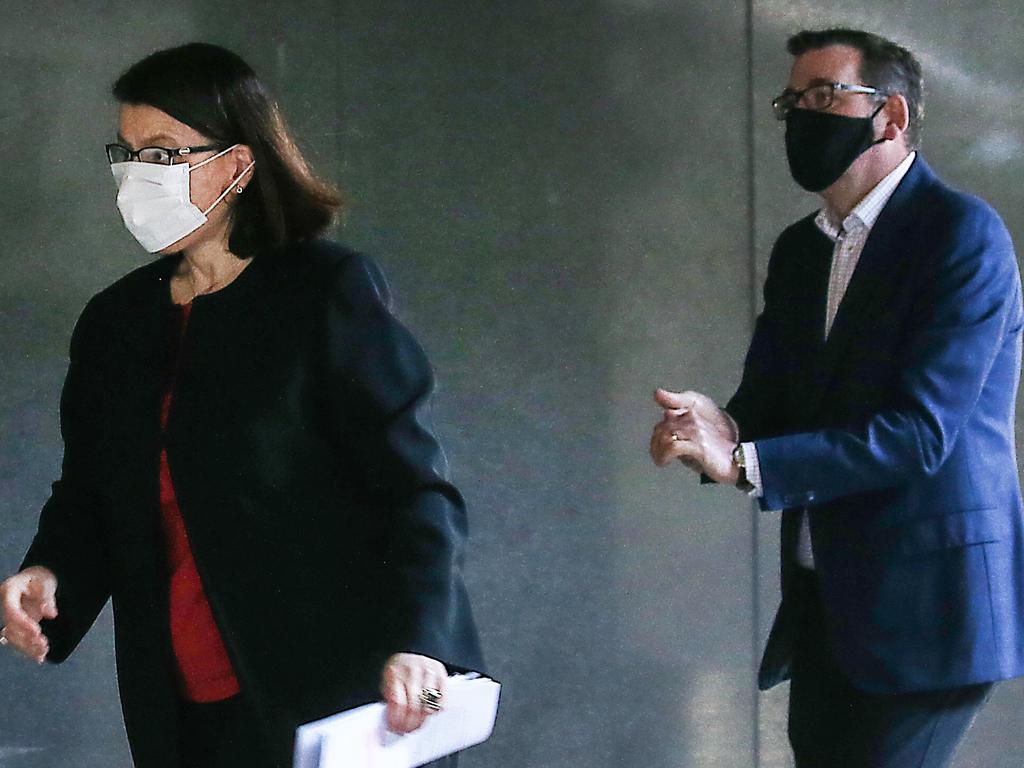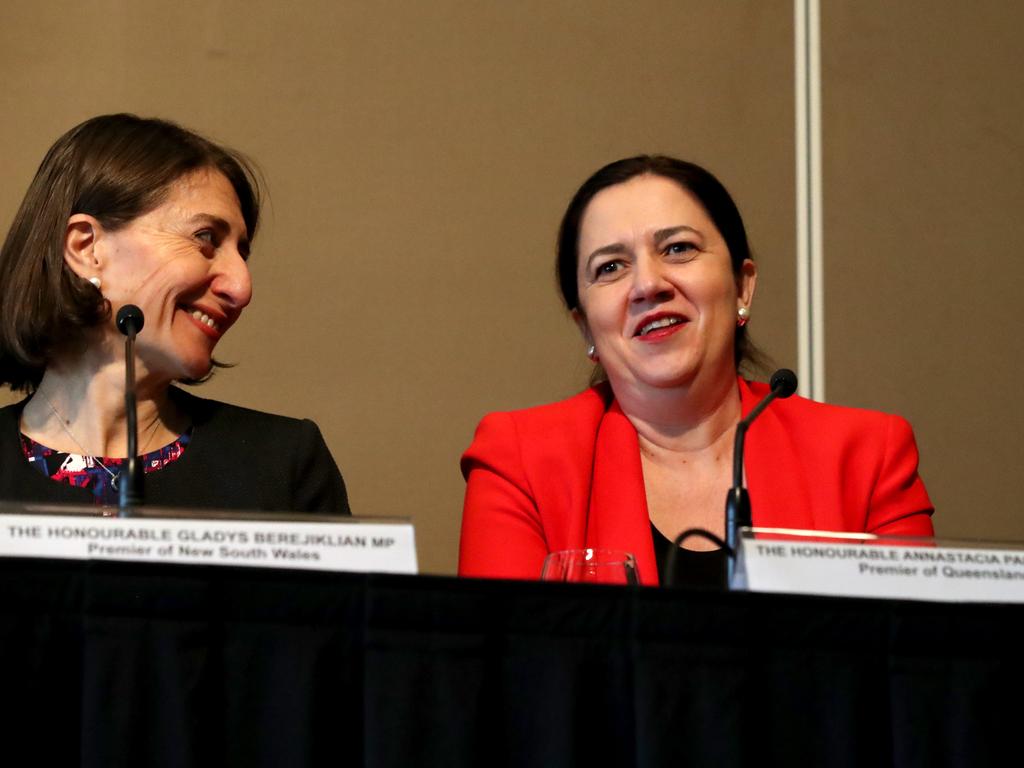
Those perceptions were formed when the disease first emerged, with the dramatic scenes in Wuhan and the agony of the passengers stranded on cruise ships giving them tangible form. As hospital systems struggled to cope, terrifying images of overrun intensive-care units made the estimates of devastating death rates all too salient.
The strong — indeed, unprecedented — reaction of governments, in Australia and overseas, can only have confirmed the public’s fears, transforming vague impressions into deeply held convictions.
It has, however, become increasingly clear that while COVID-19 is a highly contagious disease that can be extremely dangerous for the elderly and for patients with extensive comorbidities, it can be effectively managed. And it is also clear that as the management of the disease has improved, infection fatality rates — that is, the proportion of cases resulting in death — have fallen steeply.
So have the best estimates of the IFR, with Stanford University professor John Ioannidis, in a paper soon to be published by the World Health Organisation, pointing out that the initial studies focused mainly on the epicentres of the pandemic with the highest death tolls, rather than looking at the full range of countries the disease had affected.
Correcting for that bias, Ioannidis concludes that the global IFR from COVID-19 is 0.24 per cent, while that in countries such as Australia is as low as 0.1 per cent.
The contrast with the IFRs used in the modelling that informed our successive lockdowns could not be starker: those IFRs were at least three times Ioannidis’s global estimate, and exceeded his estimate for Australian conditions six times over, as did that used in the modelling Premier Daniel Andrews relied on to justify the most recent Victorian lockdown.
But although it is widely recognised that fatality rates are far lower than initially thought, public perceptions have remained frozen in time. That is, in some respects, unsurprising. Ever since systematic studies of public attitudes to risk began in the 1950s, researchers have found that new threats are judged to be far more menacing than those that are longstanding, regardless of underlying differences in probabilities of occurrence.

Moreover, the greater the extent to which risks are viewed as being incurred involuntarily, and as affecting large groups rather than single individuals, the more likely they will be considered more dangerous than they are.
All those biases have been compounded by today’s media environment. Already in the mid-1980s, Roger Kasperson and his colleagues stressed the “social amplification” of risk that occurs through the media’s focus on catastrophic outcomes at the expense of those instances of a phenomenon that are managed successfully. Now, as the media competes frantically for attention, that process magnifies perceived risks more surely and swiftly than ever.
It is, for instance, a fact that 92,000 Australians have died since the virus first hit our shores; but although COVID-19 accounts for only some 890 of those deaths, and for an even lower share of the total years of life lost, every new case leads the evening news, reinforcing its image as the grim reaper. One might have hoped that the experts would set the picture straight. Perhaps because they see their goal as being to frighten the public into compliance, they have, more often than not, done the opposite.
Never was that clearer than when Jeannette Young, Queensland’s Chief Health Officer, grievously misinterpreting a simulation undertaken at the University of Glasgow, claimed that “on average, people who died from COVID-19 lost 10 years of life”.
Since the average age of the disease’s victims in Australia is more than 85, Young’s claim implies that those lost to COVID-19 would otherwise have survived into their mid-90s, despite multiple comorbidities. In other words, were it not for the virus, they would have died a decade after their cohort’s modal age at death — a claim that taxes the credulity of the credulous.
In reality, the best and most recent study — undertaken by France’s National Institute of Demography, drawing on the actual outcomes of France’s first wave — finds that the vast majority of the virus’s victims were already close to the end of life.
Overall, the disease reduced French life expectancy by one-tenth of a year for women and two-tenths of a year for men, which, while by no means trivial, is a smaller reduction than influenza caused in 2008, 2012 and 2015.
None of that means that COVID-19 should be viewed as no more serious than the flu. On the contrary, until a vaccine or a cure become available, the case for prudence remains compelling, as does the need for effective control measures. There is, however, a vast difference between prudence, which rationally weighs likelihoods, and panic.
Getting that balance right is no easy task, with plenty of scope for error either way. But if exaggerated perceptions of the dangers have dominated, it is not merely because of human fallibility; rather, it is also because they accord so readily with the catastrophic zeitgeist of the age.

Fuelled by an apocalypse industry that feeds off the fear it spreads, every threat — from bushfires and droughts to viruses such as Zika — portends the end of life as we know it. With nature unleashing its final revenge on mankind, the moment one drama recedes, another rushes in to sustain the sense of impending doom.
The result is a world view in which the chasms that yawn beneath us are invariably deeper and more menacing than the peaks that beckon us are high and inviting. Lost — or at least badly damaged — is the axiom of progress, the assumption, dynamic in its self-evidence, that although there are terrible setbacks, detours and blind alleys, humanity ultimately moves forward, with Australia advancing more than most.
But no society can live by dread alone. And a society that stands quaking in the antechamber of its own extinction is condemned to a stagnation that no amount of stimulus spending can cure. Eternally “keeping a-hold of nurse, for fear of finding something worse”, it inevitably saps the ambition, aspiration and self-reliance on which sustained growth relies, replacing them with dependence and the desperate search for security. That, and not the staggering debt and unemployment the lockdowns have wreaked, is the greatest threat we face.
And that is why tackling the fearmongers is so important. The facts, as far as COVID-19 is concerned, are becoming clear; it’s time our governments and their advisers proclaimed them from the rooftops.








Recent polls that show a majority of Australians support tough restrictions aimed at curbing the spread of COVID-19 may well reflect public perceptions of the risks associated with the disease.